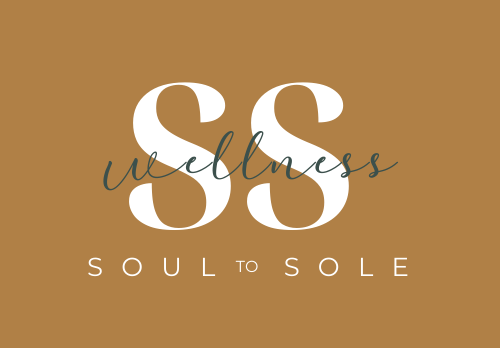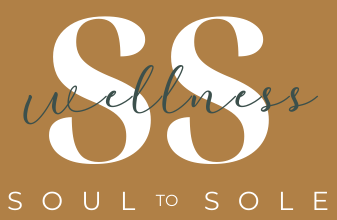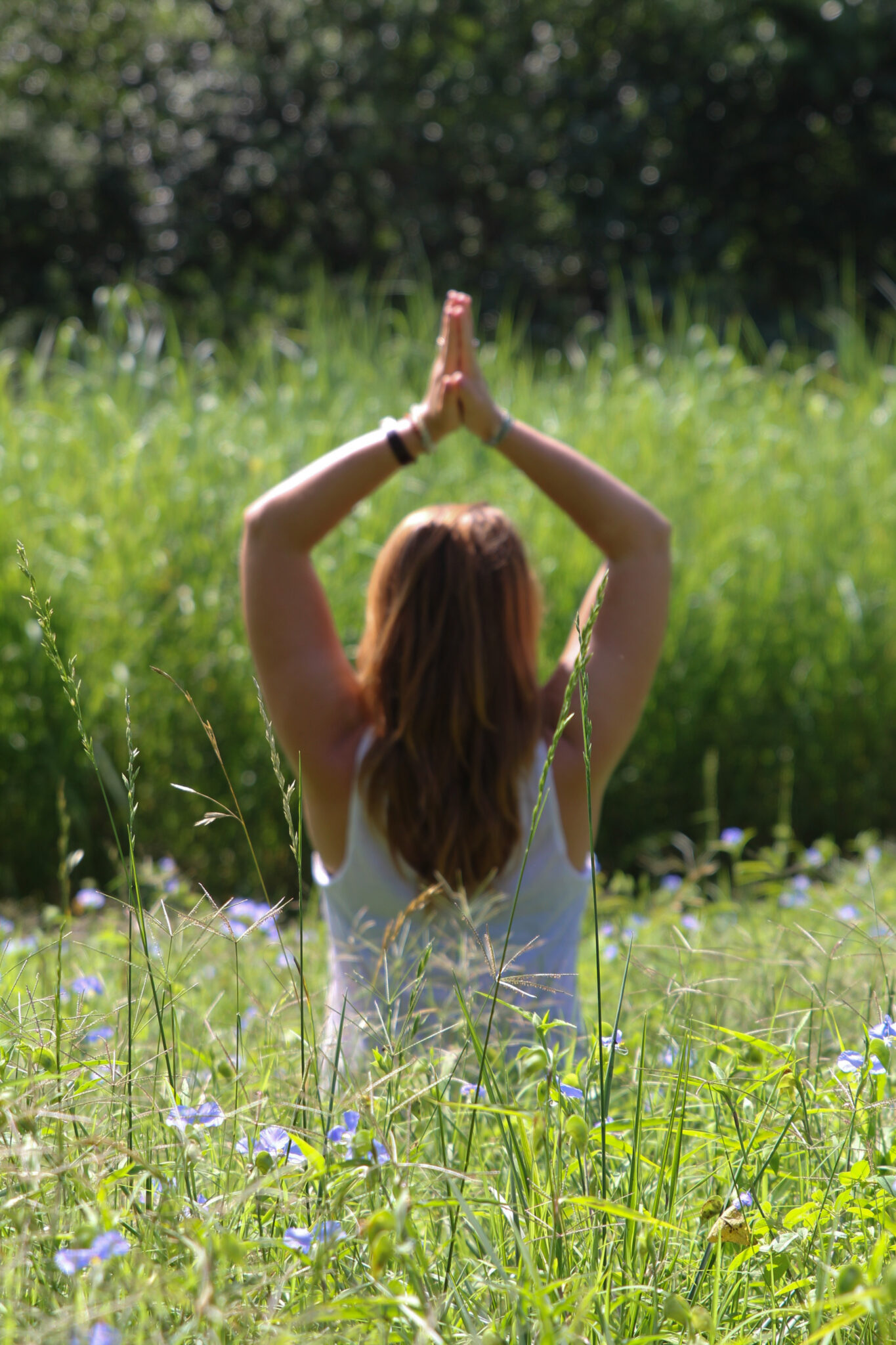

Gabriella DeLorenze
SITS
- ,
- , Anatomy, Education, Uncategorized, Upper Body
THE ROTATOR CUFF
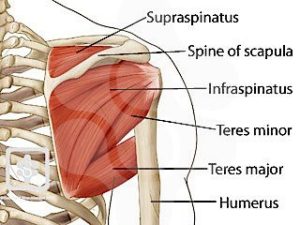 The shoulder is the most unstable joint of the body. With such a great range of motion, stability is compromised. Due to the instability, the importance of the stabilizing muscles becomes much greater. The SITS muscles refer to the rotator cuff muscles in your shoulder: the supraspinatus, infraspinatus, teres minor, and subscapularis. Each of these muscles work together to form a cuff-like appearance around your shoulder with the purpose of holding the humerus in place especially while elevating the arm. They all originate on the scapula and insert on the humerus.
The shoulder is the most unstable joint of the body. With such a great range of motion, stability is compromised. Due to the instability, the importance of the stabilizing muscles becomes much greater. The SITS muscles refer to the rotator cuff muscles in your shoulder: the supraspinatus, infraspinatus, teres minor, and subscapularis. Each of these muscles work together to form a cuff-like appearance around your shoulder with the purpose of holding the humerus in place especially while elevating the arm. They all originate on the scapula and insert on the humerus.
With improper form, weakness, deconditioned rotator cuff, and lack of range of motion, the rotator cuff is susceptible to many injuries, pain and tearing. It is imperative to strengthen these little muscles as often if not more often then you are strengthening the bigger muscles that surround the shoulder.
SHOULDER MECHANICS
While all four muscles work together to stabilize the head of the humerus in the glenohumeral joint, or shoulder joint, they also have separate jobs:
Supraspinatus: Located on top of your shoulder, it initiates abduction of the arms (lifting your arms away from the side body in the frontal plane as in Warrior II [Virabhadrasana II])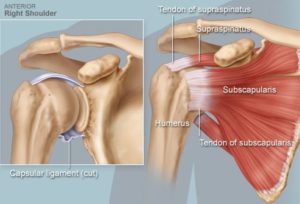
The supraspinatus also holds the humerus in place against gravitational pull
Infraspinatus: Located below the supraspinatus its main role is external rotation of the shoulder for instance in Wheel pose [Chakrasana]
Teres Minor:Located on the distal lateral scapula towards the arm pit, its main action is external rotation and works in conjunction with the infraspinatus for instance in Bow pose [Urdhva Dhanurasana]
Subscapularis: Hidden under the scapula lies the subscapularis. Its main role is in shoulder internal rotation; it also decompresses the head of the humerus to prevent dislocation.
RANGE OF MOTION
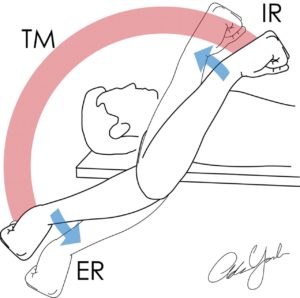 In athletic training, we call internal and external rotation the total arc of motion. Total arc of motion should equal at least 150 degrees with a minimum of 50 being from internal rotation.
In athletic training, we call internal and external rotation the total arc of motion. Total arc of motion should equal at least 150 degrees with a minimum of 50 being from internal rotation.
(INTERNAL ROTATION + EXTERNAL ROTATION = TOTAL ARC OF MOTION)
It is imperative to have proper range of motion in your shoulders to prevent injuries.
APPLY IT: YOGA WITH EXTERNAL ROTATION
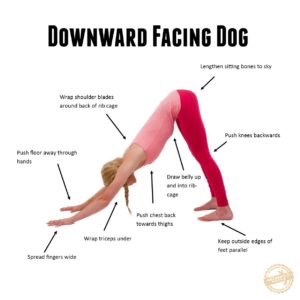 In Downward Dog [Adho Mukha Svanasana] you should be constantly “spinning your biceps to your ears” “tucking your triceps under” “spinning your hands away from the midline” anything that cues you to externally rotate your shoulders. If you are having a hard time feeling the engagement of your external rotators try this exercise:
In Downward Dog [Adho Mukha Svanasana] you should be constantly “spinning your biceps to your ears” “tucking your triceps under” “spinning your hands away from the midline” anything that cues you to externally rotate your shoulders. If you are having a hard time feeling the engagement of your external rotators try this exercise:
Stand against a wall
Place your palms flat against the wall with your fingers facing the ceiling
Look down at your elbows noticing the crease where your arm bends
Rotate your elbows so that the creases face forward facing your fingers
Once you feel comfortable with this, move to a table and add a little weight bearing
Make your way down to your mat first on your knees then fully weight bearing into your hands
Remember, always ground down through your index knuckle keeping the weight in your hands evenly distributed and push the floor away from you.
APPLY IT: YOGA WITH INTERNAL ROTATION
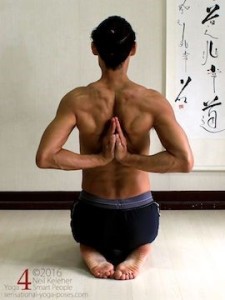 During Reverse Namaste Forward Fold or reverse prayer hands in Parsvottanasana, the shoulder is in internal rotation.
During Reverse Namaste Forward Fold or reverse prayer hands in Parsvottanasana, the shoulder is in internal rotation.
If you cannot get the palms of your hands together, use a strap. While in a forward fold position, practice binding your hands behind your back interlacing your fingers then letting your arms fall overhead. The sleeper stretch is also a beautiful tool to help increase shoulder internal rotation (see Instagram page for a tutorial!)
To help increase internal and external rotation simultaneously, try to bind your hands behind your back. Allow one arm to go overhead like you are combing your hair and reach down your spine (external rotation) and allow the other arm to go behind your back onto your lumbar spine and reach up (internal rotation):
Take note of if you can bind, the difference between left vs. right range of motion in internal and external positions. Even have a friend take a picture. Notice the change and the growth as you continue to practice and stretch!
INJURIES
Shoulder dysfunction is a main cause of rotator cuff injuries. Whether scapula related, clavicle, or humerus. Somewhere there is most likely an imbalance: too tight, too weak, out of alignment. Due to the repetitive nature of life and work, shoulder injuries tend to develop chronically overtime. Learn how to properly engage your little stabilizer muscles to help the stability of the joint. Without stability, there is only improper movement patterns.
